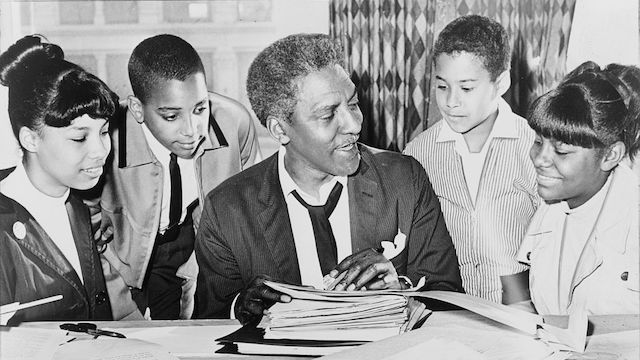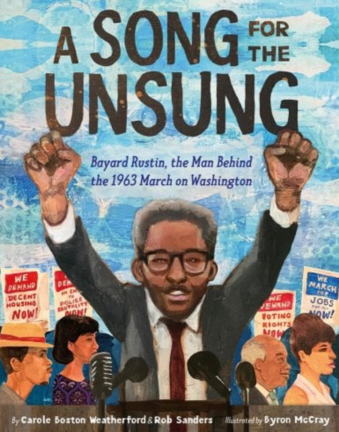
This month is about honoring the radical, imaginative, provocative and gorgeous world Black Americans are bringing forth today as much as recognizing their efforts in the past. May we take this month to contemplate and celebrate the spiritual gifts and leadings Black Quakers have followed that continue to shape our community and encourage us all to come alive.
— Kimani Keaton, Community Engagement Associate for Special Projects
The resources below provide an opportunity to lift up Black voices and explore anti-racism with the young people in our care. Much has been written about the inclusion of Black History in mainstream education and how to teach this history both in terms of the Black American experience and children’s developmental levels. Some of the links to articles and resources below reflect these discussions and may be useful to consider in a religious education context.
Whether in a program for children at meeting or at home, the work needs to begin with adults deepening our own understanding of the history and its the broader context, and clarifying our goals in presenting information and images.
Historical Background
“Carter Godwin Woodson, teacher, principal and supervisor of schools, established Negro History Week, which evolved into Black History Month following the Black Consciousness Movement of the1960s. African American History Month is a reminder to all of us to continue Carter G. Woodson’s commitment — to bring greater regard for the contributions of African Americans to this country, to understand and overcome a legacy of oppression and racism, and, in so doing, to further racial harmony among us all.” – from “The History Behind Black History Month” by Joan Novelli in Learning for Justice
Resources for Meeting & Home
- Black Youth Matter coloring pages created by Maya Gonzalez are an opportunity to celebrate and revere black youth while sparking dialogue during these radically transformative times.
- What We Believe: A Black Lives Matter Principles Activity Book by Laleña Garcia and illustrator Caryn Davidson presents the guiding principles of the Black Lives Matter movement in down-to-earth, child-friendly language, with each principle accompanied by writing prompts, space for children or adults to create their own reflections, and a coloring page. Created by two teachers, What We Believe is an essential resource for anyone discussing racial equity with young people, and offers a beautiful and inspiring lens on the most important social justice movement of our time. Supporting materials guide adults in sharing the principles with children and encourage kids to dream big and take action within their communities. (excerpted from website)
- Black Lives Matter Instructional Library compiled by Pheobe Defino. An excellent collection of children’s racial justice books all in read-aloud format. Sections/shelves focusing on: Activism and Advocacy, Self-love and Empowerment, Black History, Libros en Espanol, Additional Resources and Contact.
- Black History Flash Cards from Urban Intellectuals were designed to combat the miseducation and suppression of Black achievements around the globe. This 52-card series gives a strong foundation of the many untold stories and unknown figures that have given shape, color, and definition to the worlds of academia, science, civil rights, education, the arts, and more.
- Children’s Books on the African American Experience on the FGC QuakerBooks website include A Song for the Unsung: Bayard Rustin, the Man Behind the 1963 March on Washington, a wonderful new picture book for all ages, including younger children. It’s also a book to sing your way through — every page suggests a song related to Rustin’s experiences and the movements for peace and justice he worked for. Also available from QuakerBooks:
- Troublemaker for Justice: The Story of Bayard Rustin, the Man Behind the March on Washington (13-18 year olds)
- Holy Troublemakers & Unconventional Saints (chapters on Friends Rustin and Alice Paul; ages 8 and up)
Book lists from Colours of Us:
- Picture Books for Black History Month
- African American Historical Fiction for Middle School
- Children’s Books about the Harlem Renaissance
- Children’s Books celebrating Juneteenth
- Considerations for Early Childhood and Early Elementary Educators on Slavery and Resistance is an excellent collection of discussion, questions, and resources, including When and How to Talk with Young Children About Enslavement.
- March: Books 1, 2, 3 by John Lewis, Andrew Aydin, Nate Powell. This graphic novel trilogy for older elementary and middle school-age youth tells the story of the U.S. Civil Rights Movement, told through the perspective of civil rights leader and U.S. Congressman Lewis.
- BazanEd offers free teaching materials, including discussion and study guides for movies like “Harriet,” “The Hate U Give,” and “Just Mercy.” Useful for youth groups exploring historic and contemporary issues of Black History, racism, and anti-racism.
Include Stories that Center the Everyday Lives of Black Children
- The Day You Begin and This Is the Rope both by Jacqueline Woodson
- The Old Truck by Jarrett and Jerome Pumphrey
- Keat’s Neighborhood: An Ezra Jack Keats Treasury
- Layla’s Happiness by Mariahadessa Ekere Tallie
- You’ll find more on an excellent list of books where the lives of children of color are centered here, from EmbraceRace.
Additional resources for parents and other adults teaching and caring for BIPOC and white children can be found in Talking About Racial Injustice with Children.
Photo: New York World-Telegram and the Sun staff photographer, Public domain, via Wikimedia Commons
